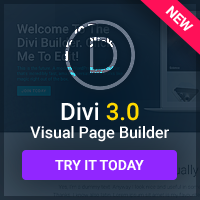Does your website have scroll bars? It might not seem like an especially important question, but it is. In fact, when it comes to website usability, the question of scrolling is one of the most vital ones out there.
Do Users Like to Scroll?
One of those eternal questions of web design is whether users are fine with scrolling, or whether they hate it. In reality, the answer lies somewhere between the two: plenty of users don't mind scrolling in the least, but there are plenty of users who still just don't scroll. The very young (with low attention spans) and the very old (with poor hand-eye co-ordination) are the two biggest groups in this category, but it is also true of people who are just new to the web. You should be designing your site so that scrolling gives added value, but isn't essential for basic usability.
The Mouse Wheel Revolution.
Since the beginnings of the web, people have become much more receptive to scrollable pages, thanks to mouse wheels and similar devices. These let them scroll with a quick flick, instead of the inconvenience it used to take. As a result, your visitors will be much more willing to scroll on your website than they used to be, and this works to your advantage. Still, you shouldn't rely on it completely.
Don't Eliminate it Entirely But Pay Attention.
The answer, then, when it comes to scrolling, is to be sensitive about it. Place everything important in a position that allows it to be reached with no scrolling even on the smallest monitors. Give your users the choice of whether to scroll or click, by linking to the individual parts of the article at the top of the page in a table of contents. In short, let the scrollers scroll, but don't hide anything from the people who don't want to.
Please, No Horizontal Scrolling!
Whatever you do, though, keep your scrolling vertical. Left-to-right scrolling on the web is an absolute abomination. Users aren't expecting it, mouse wheels can't do it, and web browsers aren't designed for it. In short, it is a very, very bad idea. Every so often some designer will come along and try to make it work, thinking they're being edgy and innovative (after all, no-one else is doing it), only to produce a completely terrible website. In the history of the web so far, there has never been a good horizontally scrolling website, and you're not going to be the designer who produces one.
Keep Flash Away from Scroll Bars.
Another common design mistake when it comes to scroll bars is to think that you can do it better than the web browser, and use Flash to create non-standard scroll bars. While you might like the look you create, it will inevitably be less useful to your visitors than a normal scroll bar would have been.
Your scroll bar won't be immediately recognisable as what it is. It's unlikely to work with mouse wheels or keyboard shortcuts, and you probably won't even let users scroll by clicking in exactly the way they want. You end up designing a scroll bar that's ideal for you, but frustrating for everyone else. However ugly you might think the default scroll bars are, people know how they work, and they're used to them they don't want to learn something new just to use your website.
Scroll Bars are Better than New Pages.
No matter how down you are on scroll bars, it's always a bad idea to replace them with pagination. An article can easily become three or four pages long with the user having to click a ‘next' button to get from one page to the next, and that's just unacceptable on the web especially since, on smaller screens, some scrolling will be required anyway. If you think users dislike scrolling, then you have to realise that they dislike waiting for new pages to load even more: if your site requires them to wait for more than a few seconds between pages, they'll abandon articles even if they're in the middle of reading them.


